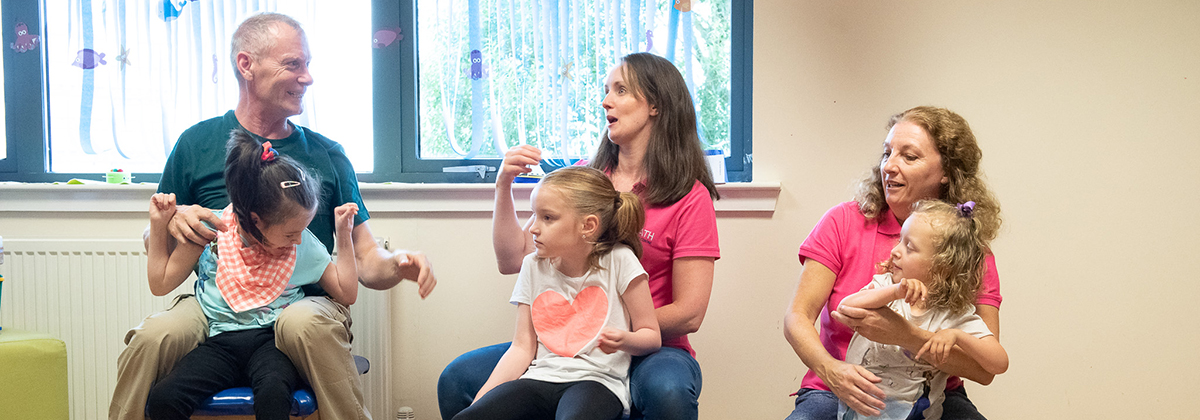There is a multitude of questions and concerns that parents might have when faced with a diagnosis of cerebral palsy. Here you can find some information on therapies and treatments.
Understanding Physiotherapy
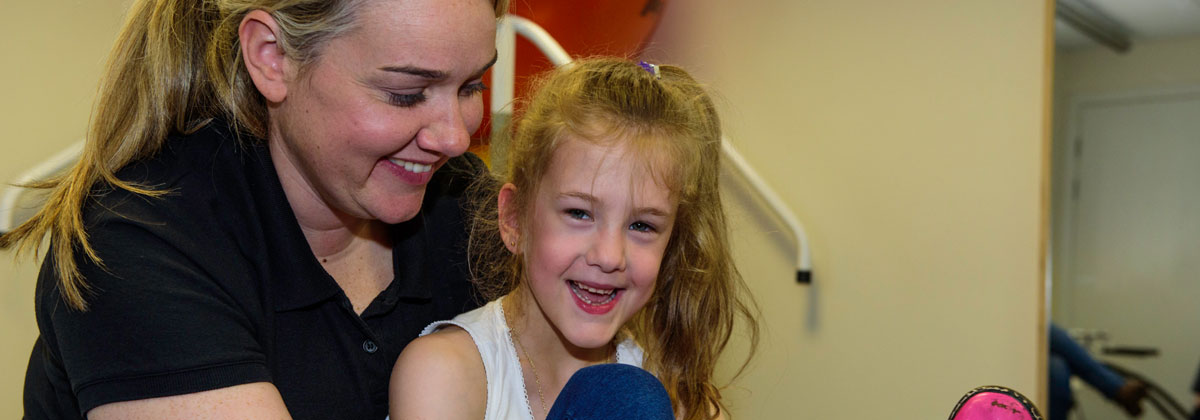
A Physiotherapist is there to help optimise posture and movement, in order to help a person be as active as possible.
Encouraging optimal posture and variety of movement helps:
- Manage negative impact of atypical muscle tone on posture/movement and explore new/alternative ways to move
- Maintain joint ranges and strength/flexibility of muscles
- Improve coordination and balance in all positions to help optimise energy efficiency
- Reduce pain and discomfort
We explore which activities enable you/your child to actively participate in daily activities to the fullest potential. This may also include assessment for additional support aids to optimise therapy outcomes such as the use of orthotics, mobility aids etc.
A Bobath trained Physiotherapist will often work together with the Occupational Therapist or Speech and Language Therapist. The ability to communicate desired goals to enable optimal participation in daily activities is paramount so that activities are meaningful and motivating. Exploring and finding alternative ways to solve day-to-day problems is also key.
Understanding Occupational Therapy
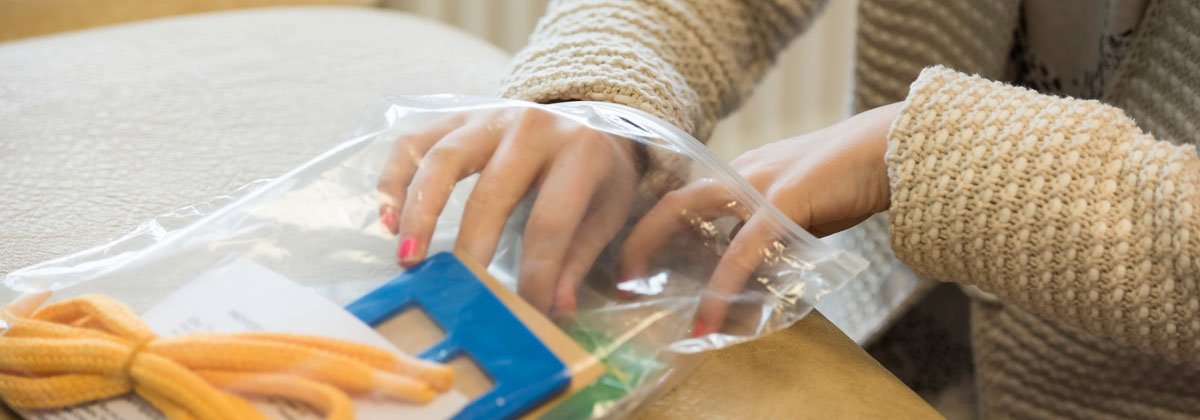
An Occupational Therapist is there to help with becoming more independent or to help with participating in everyday activities (occupations) that are important to a person/family. This includes:
- Personal care: activities such as dressing or managing to feed
- Home activities such as being able to pour a drink or make a meal
- Work activities such as being able to take part in schoolwork or use a computer
- Fun! For example playing with toys, hobbies, learning to drive a power-chair or going to a café
An Occupational Therapist will explore and get involved with three main areas:
- Personal skills and motivators: Such as hand skills, vision, perception and sensory processing
- Activities: For example, how to break activities into small, manageable parts
- Managing the environment: For example, how to best organise or adjust things
An occupational therapist does lots of problem-solving! A Bobath-trained Occupational Therapist will also consider the impact of posture and movement, particularly in relation to how a person can use their hands and their vision. This will often be done with a Physiotherapist and Speech and Language Therapist.
Understanding speech and language therapy
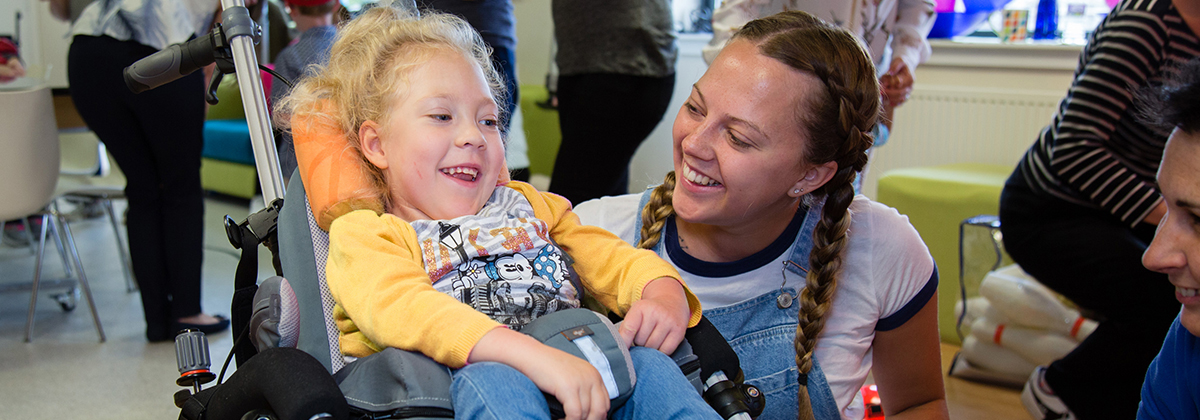
A Speech and Language Therapist is there to help with communication, eating and drinking and saliva control.
Communication can mean lots of things, including:
- Using eye contact, noises and movements to interact
- Using a signing system
- Using photos, pictures or symbols to communicate/enhance communication
- Using a high-tech device to generate speech
- Speaking
We can explore which of these enable you/your child to communicate to the fullest potential. We also work to help communication partners feel confident in their ability to communicate effectively with the individual with CP.
In order to improve abilities in communication, eating, drinking and saliva control, a Bobath trained speech and language therapist will not only consider a person’s specific oral motor ability but do this in the context of the individual’s posture, movement and alignment. Often they will do this together with the physiotherapist and/or occupational therapist.
Bobath Therapy for Adults
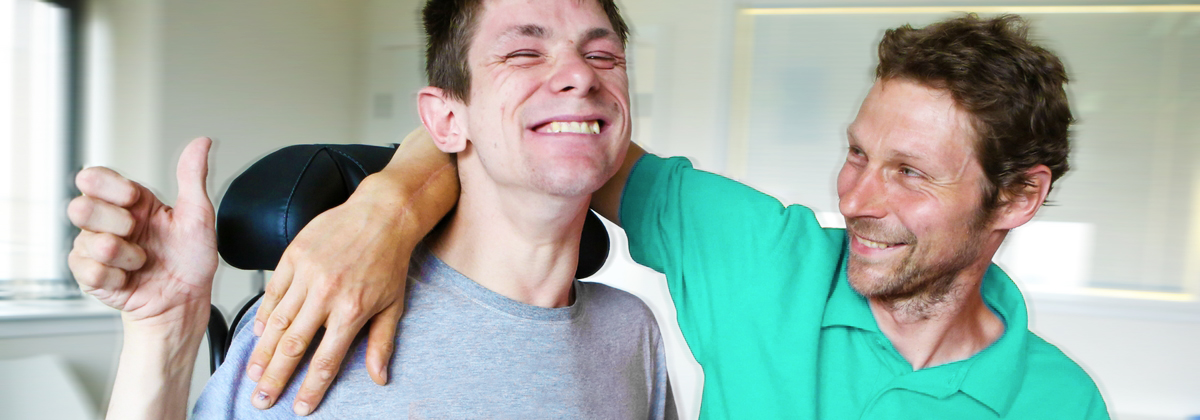
Bobath therapy is a holistic approach to the treatment and management of people who have a diagnosis of cerebral palsy or an allied neurological condition. This means that all aspects of a person’s life are considered and assessed in respect to the particular challenges Cerebral Palsy (or allied condition) presents to them as an individual.
While altered tone and altered patterns of co-ordination are key features of Cerebral Palsy, the person may also be affected by associated difficulties such as:
- disruption of (the processing of) information that is coming in: this can include disturbances of vision, perception, balance, proprioception, hearing, touch
- issues with cognition including processing of information
- epilepsy
- gastro-oesophageal reflux
- secondary complications which have developed over time such as contractures and/or deformities.
The impact of each of these areas are considered & addressed accordingly.
As Bobath therapists we work together as a trans-disciplinary team, combining the disciplines of speech & language, occupational and physiotherapy in order to most efficiently help individuals work towards achieving their goals & dreams.
This starts with us listening to the person’s concerns and then setting functional, meaningful goals together with them. We will assess potential for change and analyse how to achieve these changes - identifying priorities and identifying energy-efficient ways of performing tasks. Activities are practised until the individual is confident that they can implement these into their everyday life. The aim is for individuals to fully participate and feel included within their communities.
Cerebral palsy is a life-long condition and Bobath therapists consider each person’s changing needs over time. We aim for individuals and/or their carers to develop the knowledge, skills & confidence to take charge of their own progress – being able to ask for extra help when needed.
All our therapists have successfully completed the 8-week basic Bobath training and have attended Advanced Bobath courses & other relevant training including discipline-specific professional development.
Our therapists possess an in-depth understanding of current scientific principles that govern child development, motor control & learning, neuroplasticity and neuropathological processes. This knowledge underpins their clinical reasoning and considers both neurological and developmental perspectives. This shared basis of knowledge and reasoning ensures that Bobath therapists from each discipline are able to work in a transdisciplinary way while remaining specialists within their own fields.
Bobath Therapy for Children
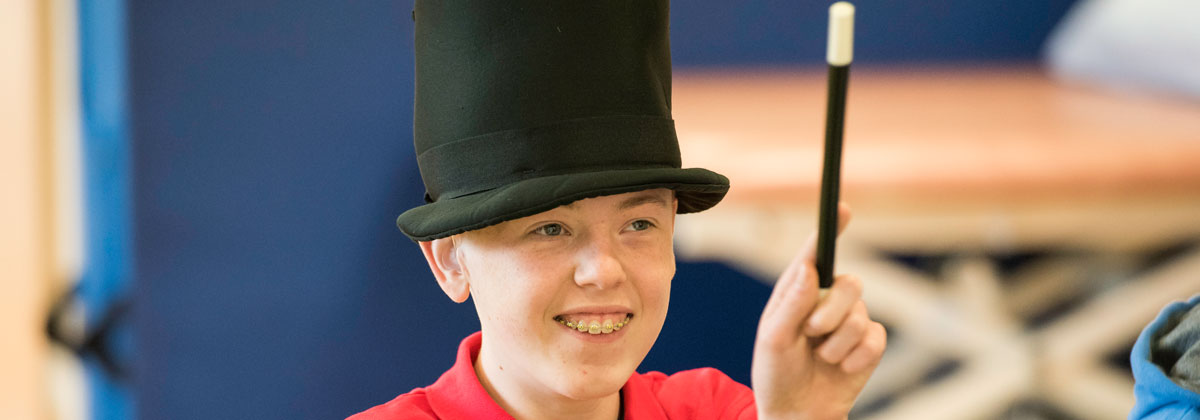
Bobath Therapy is a family-centred approach. Therapy begins with a discussion with the child and/or family affected by cerebral palsy, finding out their concerns and what they would like to achieve. We then start to look in detail at how a child moves, plays, communicates, gets dressed, eats, drinks and all the other things he/she likes and needs to do. We look at the child’s potential and consider what is impacting the child’s ability to achieve his/her best. Goals are then set jointly with the family.
We know that cerebral palsy affects each individual differently. Cerebral palsy affects posture and movement but also can affect sensation, vision, learning, communication, breathing, eating, and drinking. Because of this, Bobath therapy is as individual as each child. Within the Bobath Concept physiotherapists, speech and language therapists and occupational therapists work together, often within the same therapy session. We call this a transdisciplinary approach.
As part of the Bobath concept, we base our therapy on an understanding of the child’s muscle tone and how muscle activity is coordinated.
We use our handling to help the child learn more efficient ways of moving. We want to enable him/her to be able to participate in everyday tasks more effectively and efficiently, resulting in lasting changes. This is essential in order to help prevent less desirable changes in the future. We may make suggestions for changes to the child’s surroundings to increase possibilities and participation.
As Bobath therapists, we use our knowledge of how children develop and what skills lay the foundations for future abilities to guide our therapy. We also use our knowledge of how the brain controls, learns and refines movement (motor control and learning) in therapy. We understand how damage to a young brain can cause difficulties in development but also how to capitalise on a developing brain to learn to do new things.
Health Professionals
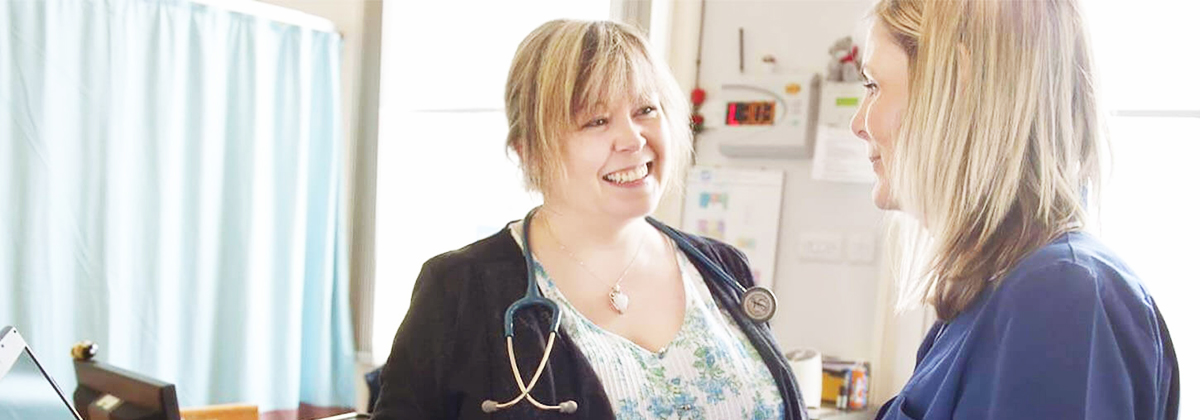
Everyone’s journey with cerebral palsy is different and in the early years, a child with cerebral palsy can encounter a number of health professionals. They each bring different expertise and can help a child in unique ways.
Here are more details on what everyone does, how they can help and when you are likely to meet them, if at all.
Paediatrician
Paediatricians are doctors specialising in the care of children. You may meet a paediatrician for the first time in hospital if your baby is born preterm or with problems. Or you may be referred to a Community Paediatrician if your child is not hitting their developmental milestones and your GP or Health Visitor think further investigation is required. In this useful guide produced by Scope you can also find useful suggestions to help you prepare for appointments.
Community Paediatrician
Community Paediatricians specialise in childhood disability. At your first appointment, they’ll take a detailed history and draw up a plan on how best to help your child. They will refer your child to other specialist teams for assessment and follow up on progress every 6 or 12 months. They regularly liaise with schools, school nurses and Education Authorities to make sure appropriate support is provided through the school years.
Neurologist
Neurologists are doctors specialising in disorders affecting the nervous system. Children with cerebral palsy may be seen by a Paediatric Neurologist and may be attending their Complex Motor Disorders Clinic. Neurologists play a key role in the early years as brain tests and scans are conducted to rule out other possible conditions and reach a diagnosis of cerebral palsy. They may also be involved with regard to tone management or if epilepsy is present.
Orthopaedic Surgeon
Orthopaedic surgeons are medical experts with extensive training in the proper diagnosis and both non-surgical and surgical treatment of injuries and diseases of the musculoskeletal (muscles and skeleton) system. Spinal surgeons are orthopaedic surgeons who provide care for patients with conditions of the spine. What? Why? Children in Hospital have also produced a series of videos to help prepare children for any hospital procedures they may need, by explaining and demonstrating what will happen during the procedure.
Health visitor
The key point of contact between you and the various support services is likely to be your Health Visitor. A health visitor will usually visit you at home for the first time around 10 days after your baby is born. Until then you'll be under the care of your local midwives. They are usually attached to your local GP practice and will visit a child in their home. As the child gets older and their needs become more complex, their key worker is likely to be a social worker.
Social worker
Children and adults with a disability need different kinds of help at different times in their life. Social workers are trained to help families access the help they need. As the first point of contact they can provide practical pointers to services, funding and additional help available through the Local Authority. They may also have a budget for providing short breaks, or other respite services.
Physiotherapist
Physiotherapists help optimise posture and movement and balance and coordination in order to help a person be as fit as possible so they can be an active participant within their communities.
Occupational Therapist
Occupational Therapists (OT) help people of all ages with becoming more independent or to help with participating in everyday activities (occupations) that are important to a person/family.
Speech and Language Therapist
Speech and Language Therapists can help individuals with communication, eating and drinking and saliva control.
Orthotist
Orthotists assess a patient’s needs then measure, design, fit, adjust and service orthoses (such as splints, braces and specialist footwear). They work with other members of the health team to improve mobility and balance, correct deformity and relieve pain. It is important to have any orthosis re-evaluated every 6 to 12 months to make sure it still fits and remains comfortable.
Educational Psychologist
A child with cerebral palsy may have additional support needs or learning difficulties. As the child nears school age a parent may ask their educational authority to make an assessment of the child’s educational needs. This assessment is likely to be carried out by an Educational Psychologist who can help to advise on the best school for the child, as well as highlighting through the Co-ordinated Support Plan what additional help and/or equipment might be needed. Enquire are a good first point of contact for any further advice linked to additional support for learning.
Nutritionist / Dietician
Children and adults with CP may find getting the right amount of nutrients a challenge for a number of reasons:
- Frequent infections
- Eating, drinking, swallowing problems
- Need a modified consistency diet (e.g. soft or pureed food)
- Rely on others for eating
- Poor appetite due to gastro-oesophageal reflux or constipation
- Eating may be very effortful and take a long time
- Sensory difficulties that make eating difficult may cause a child to turn away, refuse to eat, bite down or vomit
- Weight problems due to their difficulty with movement
Podiatrist
Podiatrists are there to help with foot and lower limb health and function, supporting people to maintain and improve mobility and reduce pain, throughout their life. They can help with:
- Avoiding or reducing pain: relieve discomfort caused by thickened or 'callused' skin through custom insoles and personalised footwear
- Staying active: improving gait through the provision of foot orthoses, bespoke footwear, footwear advice and exercise prescription
- Reducing loss of function: improving movement using tailored stretching programmes of affected muscles
- Providing non-surgical interventions for children to alleviate foot pain and sensitivity
Podiatrists work with individuals, and their carers, to understand what is important to them, and how cerebral palsy is, or may, affect their lifestyle. They have a number of treatments and prevention strategies to help people with cerebral palsy manage and improve their mobility, comfort, and quality of life.
